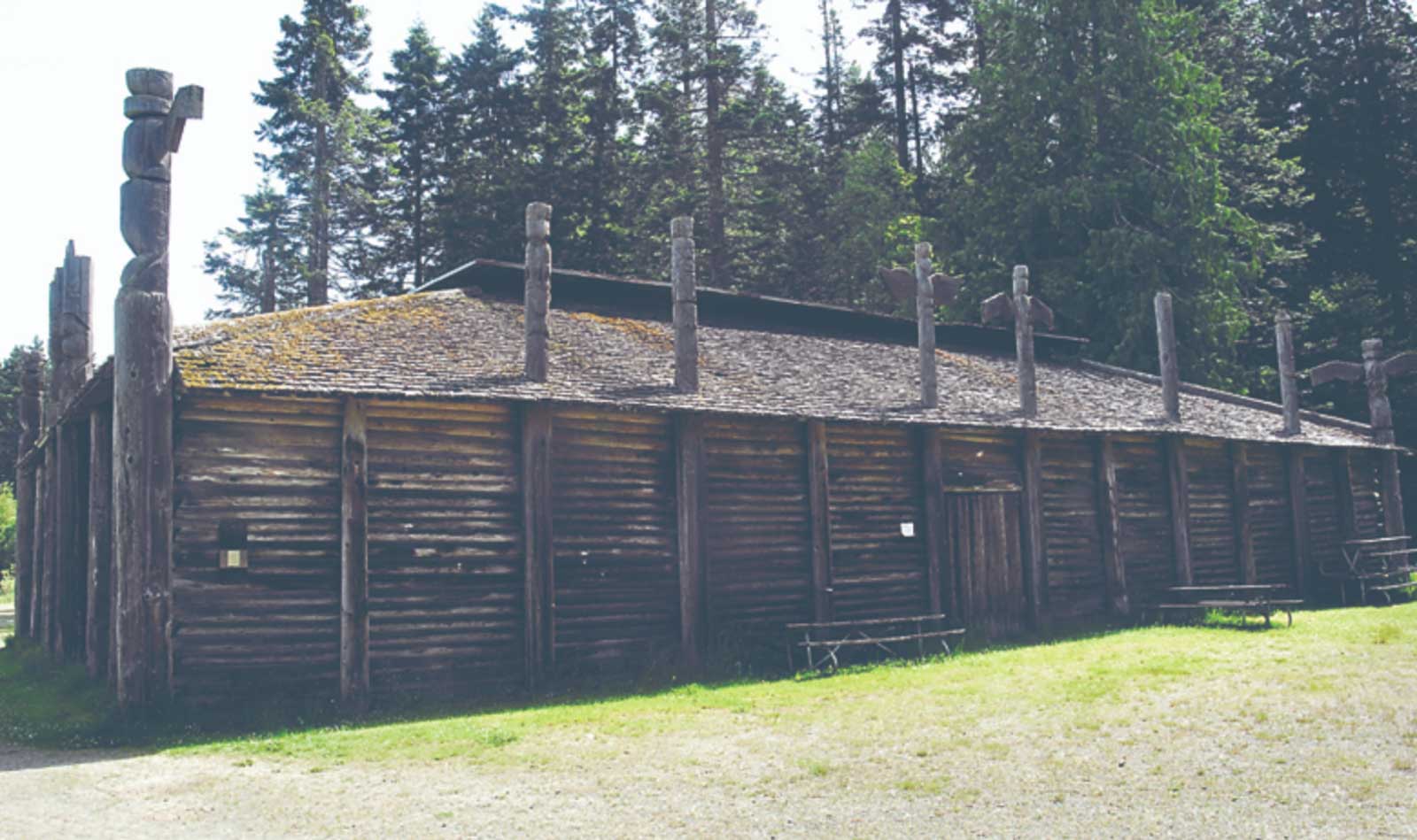The Native History of Olympic National Park
Long before western settlement, the Olympic Peninsula was a home of abundance.
By LA Olympic guide, Jack Waterhouse
The Olympic Peninsula is a vast and rugged area, defined by extraordinarily lush old-growth rainforest, glaciated peaks, wild and powerful rivers, and miles of coastline dotted with sea stacks and tide pools. In an area of such abundant plant and animal life, it is no surprise that there were many groups of people who thrived on the peninsula for millennia before westward expansion by European groups reached the area in the later part of the 1700s.
There are eight tribes existing today that have traditional associations to lands now within the boundaries of Olympic National Park, each with their own unique culture, traditions and languages.
The eight tribes are the Jamestown S’Klallam, Lower Elwha Klallam, Port Gamble S’Klallam, Hoh, Makah, Skokomish, Quileute, and Quineault.

A replica red cedar canoe, one of the area inhabitants’ primary forms of transportation. Photo courtesy of donsmaps.
The earliest evidence of human inhabitants in the Olympic peninsula comes in the form of a spearhead, which was found embedded in the ribs of a mastodon skeleton in 1977. Scientists were able to determine that the spearhead was 13,800 years old. These early inhabitants were hunter-gatherers, as evidenced by this discovery, as well as that of stone tools scattered across the peninsula.
By 3000 years ago, the native people had evolved to become skilled fisherman, taking advantage of the plentiful marine life and shellfish found along the coast, as well as the many inland rivers and lakes teeming with fish.
They also turned to the forests and the many edible plants found there for food, and additionally, shelter. Dwellings, known as longhouses, were constructed from the enormous red cedar trees, as well as canoes. In addition to food and shelter, and modes of transportation—clothing, baskets, tools, and medicine were created from the natural world around them. From the spearhead dating to 11,800 BC to 1855, the original residents of the Olympic peninsula lived a life symbiotic with the natural world.

Natives of the area constructed dwellings like this, known as longhouses, from the enormous red cedar trees in the region. Photo courtesy of Peninsula Daily News
Life began to change for the locals on the peninsula in the 1800’s, most would argue for the worse. The first Europeans reached the area in the latter part of the 1700’s, and with them they brought disease that the natives were not immunized against, and entire villages and populations were wiped out. The new settlers were in direct competition with the tribes for the use of the area’s natural resources. Salmon were overfished from streams and rivers, elk populations were decimated, and large portions of timber were cut down. The influx of Europeans to the area brought widespread social changes as well.
Relations between the tribes and Europeans came to a head in 1855 with the signing of the Treaty of Point No Point.
Isaac Stevens, governor of Washington territory, convened members of several tribes to negotiate terms. Under the terms of the finalized treaty, tribe members were to cede ownership of their land to the US government in return for 60,000$ and relocation to small plots of land along the Hood canal. Additionally, the tribes agreed to trade only with the United States government, and to free all slaves. Several tribe leaders, most notably, Skokomish leader hool-hol-tan, expressed concern over the lack of readily available food on the proposed reservation, fearing a fundamental threat to their traditional way of life. The first day of negotiations ended without an agreement. But, the following morning, tribal leaders arrived with white flags, ready to sign, and ultimately, the Treaty of Point No Point was ratified the next day on January 26, 1855. Since then, the first people of the Olympic Peninsula have lived in these reservations, scattered throughout the region.

Native petroglyphs like this one, credited to the Makah tribe, can still be found in and around Olympic National Park, remnants of the area’s original inhabitants. Photo: Shutterstock
Today, the rich heritage and history of these people holds a powerful presence over the Olympic Peninsula. While hiking the park’ broad sandy beaches, dense lush rainforest, and exposed alpine ridges, it is easy to imagine the previous way of life that existed here and its people- resourceful, resilient, powerful- and all visitors are encouraged to treat the land the same way it’s original inhabitants did- with utmost respect for its life-giving qualities.
LEARN MORE
Fascinating Fauna of Olympic National Park
Olympic National Park Backpacking Tours
Olympic National Park Youth & Teen Summer Camps
Olympic National Park Guided Day Hikes










1 Comment